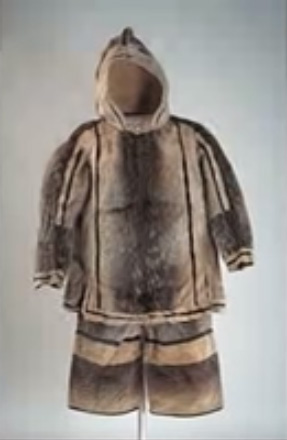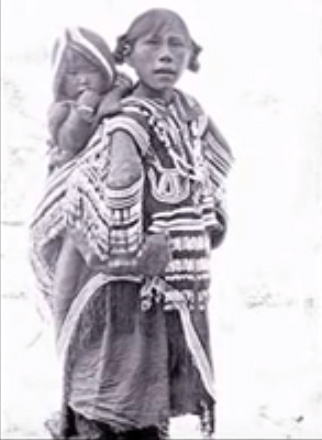 Canadian aboriginal peoples lived in a very beautiful but also rather harsh environment. They needed all their skill and imagination to survive even in the northernmost areas of the continent. Warm houses and warm clothes were among the most important things for Canadian indigenous tribes, and they used every single available material – when hunters or fishers brought prey, everything was in use: meat, fur, skin, bones, sinew, intestines, claws and teeth, feathers, etc. You would be surprised as to what materials can be used to make clothing!
Canadian aboriginal peoples lived in a very beautiful but also rather harsh environment. They needed all their skill and imagination to survive even in the northernmost areas of the continent. Warm houses and warm clothes were among the most important things for Canadian indigenous tribes, and they used every single available material – when hunters or fishers brought prey, everything was in use: meat, fur, skin, bones, sinew, intestines, claws and teeth, feathers, etc. You would be surprised as to what materials can be used to make clothing!
There is a number of indigenous groups who consider Canada their home – Inuit, Eskimo, Tlingit, Tsimshian, Nuu-chah-nulth, Niisitapi, Piikáni, Chipewyan, Mi'kmaq, and others. Canada is a large country, so its aboriginal tribes lived in different areas with different climate conditions. Of course, it influenced their lifestyle and clothing traditions. In this post, we’d like to talk about Canadian indigenous Arctic peoples and their traditional clothes.
Among the most extravagant parts of animal body used to create clothes was fishskin. You can read about it here: Fishskin clothing and accessories were common for the Arctic peoples – Inuits, Aleuts, Eskimos, Yupiks. But this was by far not the only material for costumes.
Before modern waterproof, membrane, and synthetic fabrics were invented, people knew some secrets as to how to protect their bodies from the cold, rain, and snow. Most of their garments were made from skins, fur, and leather they got from the local animals – caribou, seals, elks, bears, wolves, lynx, beavers, etc. Porcupine needles and bird feathers were used to make headdresses and jewelry, to decorate the accessories, etc.
The clothes were made by women, while men hunted and skinned animals, prepared their skins. Women took animal skins, marked the shape they needed with a sharp bone, cut out these pieces with a special knife, and then sew them into garments or accessories (boots, hats, mitts, bags, and other useful items). As threads, they used animal sinew. They dressed themselves, their husbands, children, and other family members. Canadian indigenous people were very skilled in leatherwork, furwork, knew how to prepare skins, including fishskins, and how to make these materials waterproof.

Inuit parka and trousers, around 1897
In such cold climates, people needed to cover every single part of their body, except for maybe faces, so such items as warm shoes, mittens or gloves, and hats were a must-have. Shoes were often produced from seal skins that provided some waterproof. Also, shoes could be made from caribou skins or other fur. In some ethnic groups, male and female shoes differed from one another – the outside of men’s shoes was fully covered with fur, while women’s shoes were only partially covered with fur. Except for warm winter shoes, there was thinner footwear for warmer seasons that was waterproof rather than protected from the cold.
The clothes of Canadian indigenous Arctic peoples were multilayered for better protection from the cold. Canadian traditional jackets are called “parka” and they’re used by the locals to this day, though modern parkas are very different from what Inuits and other Arctic peoples wore. Vintage parkas were made from caribou hide and practically always had a hood.
Read also: Canadian parka – Inuit folk garment popular to this day
Also, people wore trousers made from the same material as parkas.
Children, of course, needed some clothing with high protection from the cold, too. There were jumpsuits made from caribou skins, kid’s parkas and trousers, the same accessories adults’ wore (hats, hoods, mitts, shoes), etc. Families with children also needed some sort of transportation for the little ones, so they used cradleboards, specific sacks, large pockets on the back of a parka, etc. Animals provided Canadian aboriginal tribes with everything they needed.

Inuit woman and child, wearing beaded parka with a pocket for the baby. Southampton Island, Nunavut, Canada, 1925-1926


